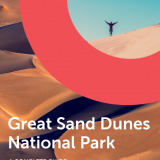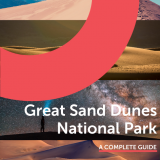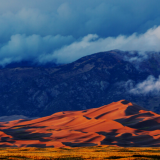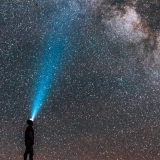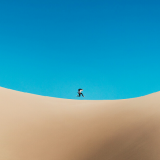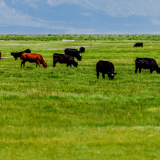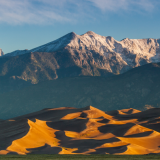Imagine taking a piece of the Sahara Desert and plopping it in the middle of Colorado. Now you have a pretty good idea of what to expect from this uber-unique US national park. Nestled between the snow-capped Sangre de Cristo Mountains to the east and the expansive San Luis Valley to the west, the park’s massive sand dunes—the largest in North America—are a place unlike anywhere else in the world. If you ever dreamed as a kid of playing in a giant sandbox, this place is for you.
But there’s more to Great Sand Dunes National Park than huge piles of sand. The area’s mountains are home to beautiful alpine lakes and wildflowers, while herds of elk and pronghorns roam the grasslands in the mornings. And with crystal-clear skies and a high elevation, Great Sand Dunes offers some of the best stargazing opportunities around.
Where is Great Sand Dunes National Park?

Great Sand Dunes is located in Southern Colorado, about halfway between Denver and Albuquerque. The drive to the park from either city is a little less than 4 hours, although the cities of Colorado Springs, Pueblo, and Santa Fe are a bit closer.
The closest town is Mosca, which has a gas station and post office and that’s about it. If you’re looking for more amenities, including restaurants, hotels, and shops, you’re better off heading to Alamosa, which is about 37 miles away.
The closest national parks are Mesa Verde, located 200 miles southwest in Montezuma county, Colorado, Black Canyon of the Gunnison, sitting 230 miles northwest in Montrose county, Colorado, and Rocky Mountain National Park, a quick 260 miles north in Larimer, Grand, and Boulder counties.
Great Sand Dunes National Park Facts
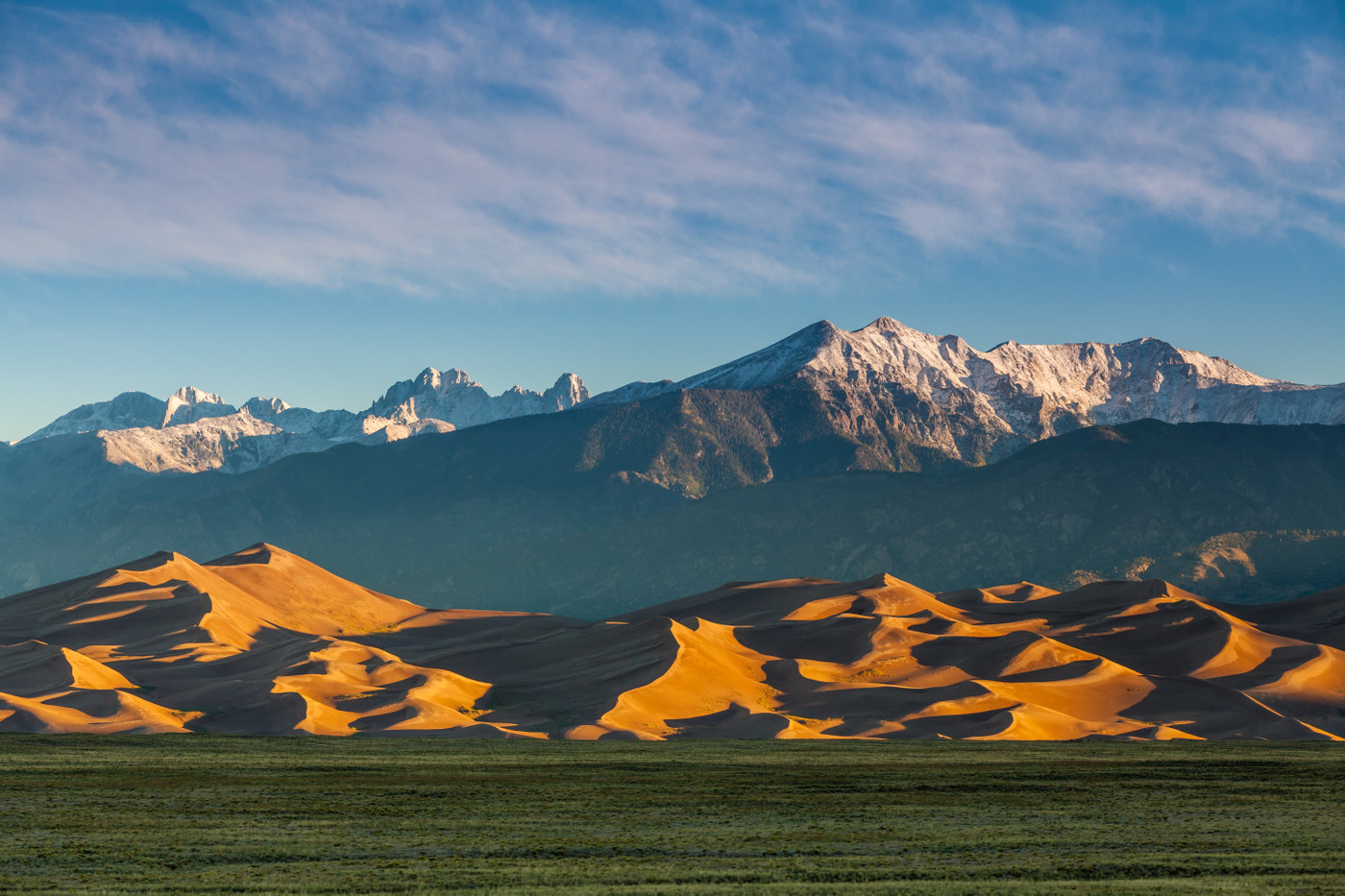
Not too surprisingly, the sand dunes are the main attraction at Great Sand Dunes National Park. Pictures don’t really do justice to just how huge these dunes are. Reaching up to 750 feet, they are the largest sand dunes on the continent. If you’re approaching from the west, you’ll see them rising high above the San Luis Valley with the Sangre de Cristo Mountains framing them in the background. It’s an unforgettable view unlike anywhere else in North America, and possibly the world.
Getting to Great Sand Dunes National Park

From Denver, simply take I-25 South until Walsenburg and then take US-160 West. Turn right onto CO-160 North just after passing Blanca. The road will end at the park entrance.
From Albuquerque, take I-25 North until Santa Fe, then take US-285 North all the way to Alamosa. Turn right onto US-160 East, then left onto CO-150 North.
Great Sand Dunes National Park Weather
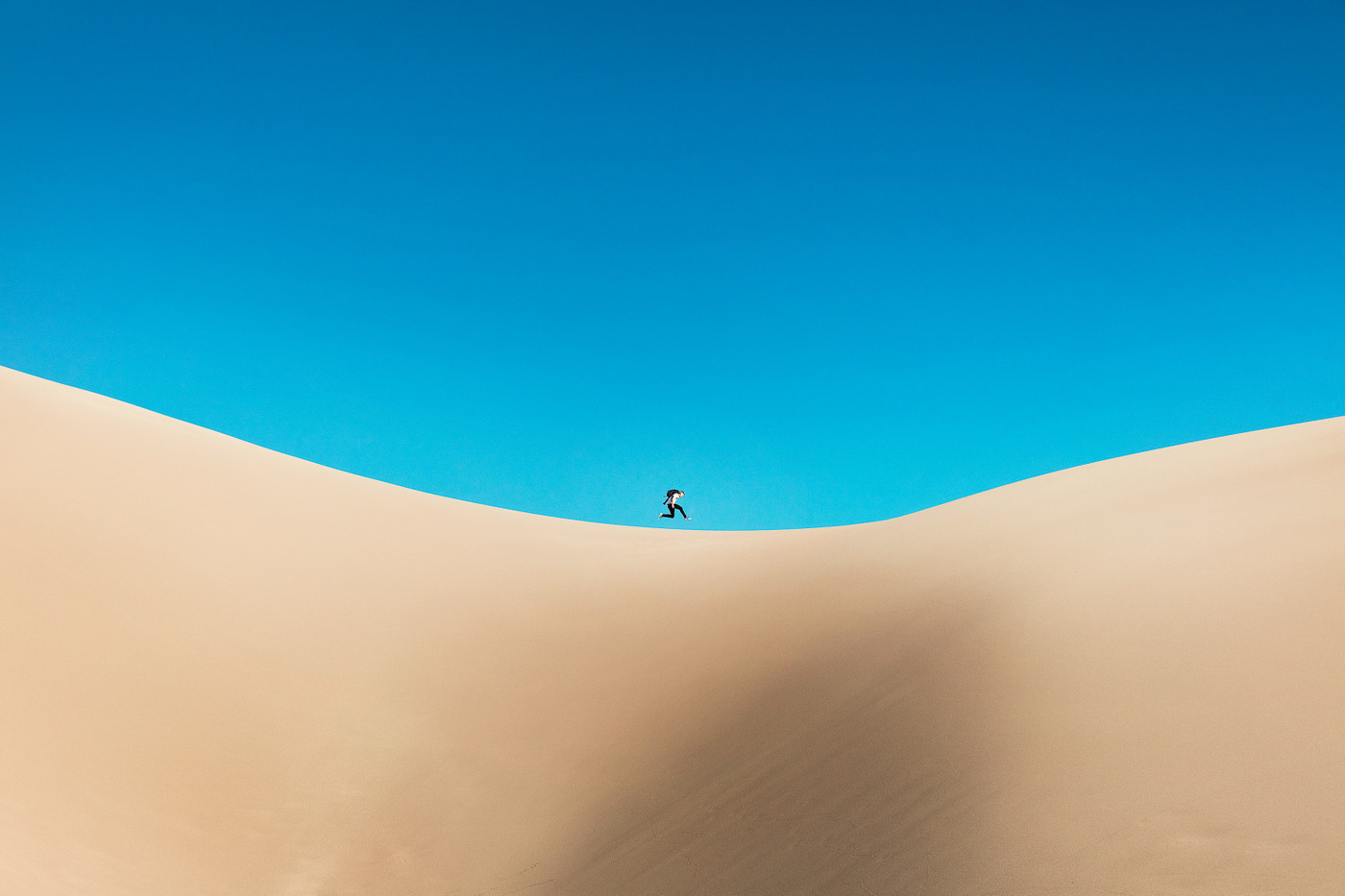
May and June are the most popular months to visit Great Sand Dunes. The weather is mild at this time, but be prepared for crowds on the weekends, especially around Medano Creek. While the water level of Medano recedes over the rest of the summer, July to August are still great times to visit, with wildflowers blooming then. October and November are also good months with mild temperatures and no crowds. From December to February, the alpine trails may be too covered in snow, but there are often enough mild days to make the dunes accessible. The worst time to visit is March and April when winds are at their highest and snow is deepest, making the trails and dunes inaccessible.
Great Sand Dunes National Park Hours

Great Sand Dunes National Park is open 24 hours a day, 365 days a year, although the Piñon Flats Campground is only open April to October. The Visitor Center is open every day except Thanksgiving, Christmas, and New Year’s Day. Its hours are 8:30am to 5:00pm daily from Memorial Day Weekend through Labor Day Weekend and then 9:00am to 4:30pm every day for the rest of the year.
The park is currently under limited operations due to COVID-19. For recent COVID status and frequent updates, check out Great Sand Dunes National Park’s current conditions.
Great Sand Dunes National Park Entrance Fee

A 7-day pass to Great Sand Dunes National Park is $25 for a non-commercial vehicle. This pass covers all occupants in the vehicle. For a motorcycle, the fee is $20. You may also want to consider buying an Interagency Annual Pass, which costs $80 and gives you free, year-round access to all U.S. National Parks and Federal Recreational Lands.
Hiking in Great Sand Dunes National Park

Whether you want to pave your own way in the sand (no trails here!) or escape the summer heat under the park’s nearby forests and trees, here’s a list of some of our favorite hiking spots in Great Sand Dunes National Park:
Easy, perfect for families:
- Dunes Overlook Sand Ramp Trail (1.5 mile out-and-back)
- Montville Nature Trail (0.5 mile loop)
- Pinyon Flats Campground Trail (1 mile loop)
- Wellington Ditch Trail (1.8 mile out-and-back)
- Sand Sheet Loop (0.4 mile loop)
Moderate, fairly strenuous:
- Mosca Pass (6.4 mile out-and-back)
- Sand Dunes Loop (5 mile loop)
- Dunes Overlook Trail (2.7 mile out-and-back)
- Medano Lake Trail (7.9 mile out-and-back)
- Medano Pass Primitive Road (19.9 mile point-to-point)
Hard, experience recommended:
- High Dune Trail (3 mile out-and-back)
- Dune Trail from Pinyon Flats (4.5 mile loop)
- High and Star Dune Loop (8 mile loop)
- Upper Sand Creek Lake Trail (7.4 mile out-and-back)
- Point of No Return to Cold Creek (18.5 mile out-and-back)
Great Sand Dunes National Park Lodging
Great Sand Dunes National Park Camping
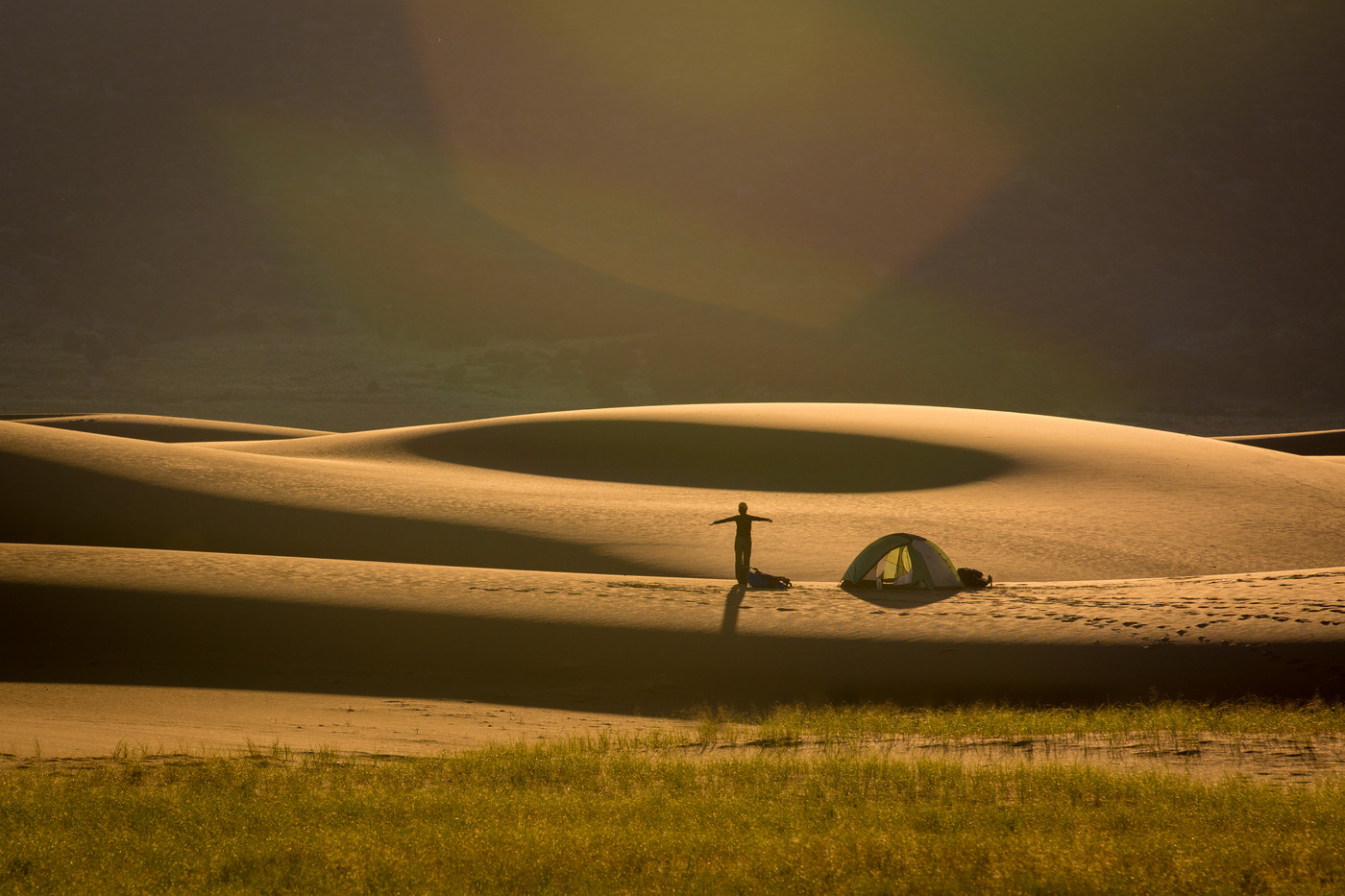
There’s two ways to camp in Great Sand Dunes National Park: on the dunes with a permit (these are hard to snag, so make sure to purchase one in advance) or at a nearby campsite. If you choose option #2, here are some of the best campgrounds and campsites inside and close by Great Sand Dunes National Park:
- Piñon Flats Campground
- Mosca Campground
- Zapata Falls Campground
- Alamosa KOA Journey
- Alamosa Economy Campground
- Great Sand Dunes Oasis
- Sand Dunes Swimming Pool and Campground
- San Luis Lakes State Wildlife Area
- Base Camp Family Campground and RV Park
- Blanca RV Park
Hotels Near Great Sand Dunes National Park
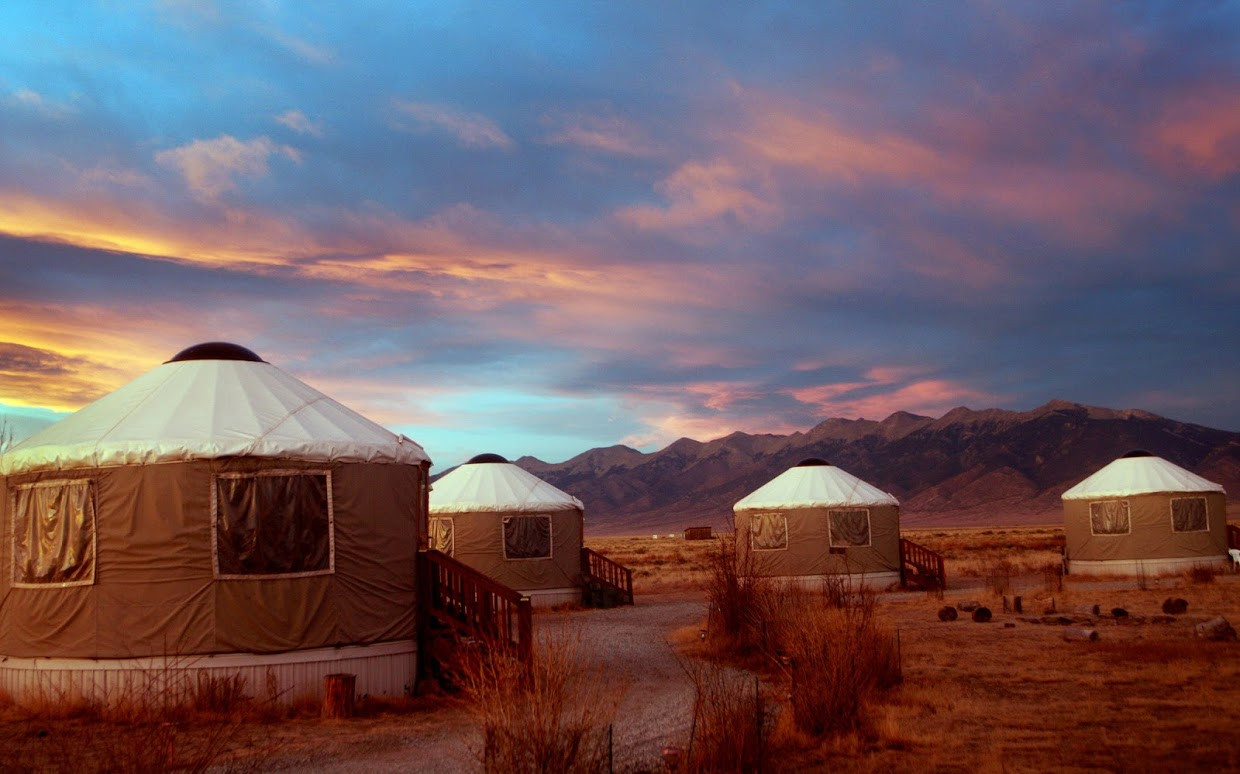
If camping isn’t your thing, there are plenty of resorts, hotels, hostels, inns, cabins and B&Bs within a quick drive of Great Sand Dunes. Here are some of our favorites:
- Great Sand Dunes Lodge
- The Sunset Inn
- Movie Manor
- Valley Haven Lodge
- Joyful Journey Hot Springs Spa
- Mountain View Motor Inn
- Dunes Inn Alamosa
- Monte Villa Hotel
- Zapata Ranch
- Sandhill Inn & Suites
Great Sand Dunes National Park Airbnb
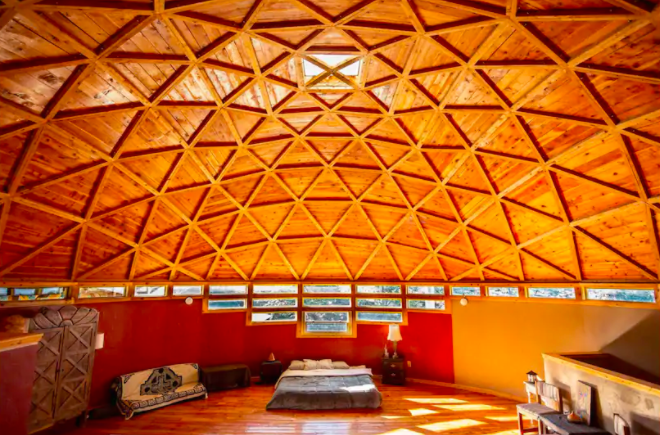
Most Airbnbs around Great Sand Dunes National Park are located in Alamosa, which mostly offers bungalows and a few apartments. Outside of Alamosa, there are rustic cabins and private campsites available.
For an experience that’s more “out there,” head to Crestone, located just north of the park. This tiny town proudly calls itself the “New Age Religious Capital of the World” and it hosts a ton of religious institutions, including a Carmelite monastery, a Hindu temple, New Age churches, and many Buddhist centers. The Airbnbs in and around Crestone are definitely one-of-a-kind, including domes, adobe cottages, and “star huts.” It may not be everybody’s cup of tea, but it’s certainly an experience you can’t find elsewhere.
Great Sand Dunes National Park Tours

Ranger programs are offered from spring to fall, although the specific tours vary so you’ll have to check in with the park beforehand. There is usually a ranger-led nighttime program to help you understand the night sky and nocturnal wildlife. The only authorized 4WD outfitter in the park is Pathfinders 4X4, who offer two tour packages: one of the dunes and another of the dunes and the alpine Medano Pass.
Best Things to Do in Great Sand Dunes National Park
Climb the Dunefields
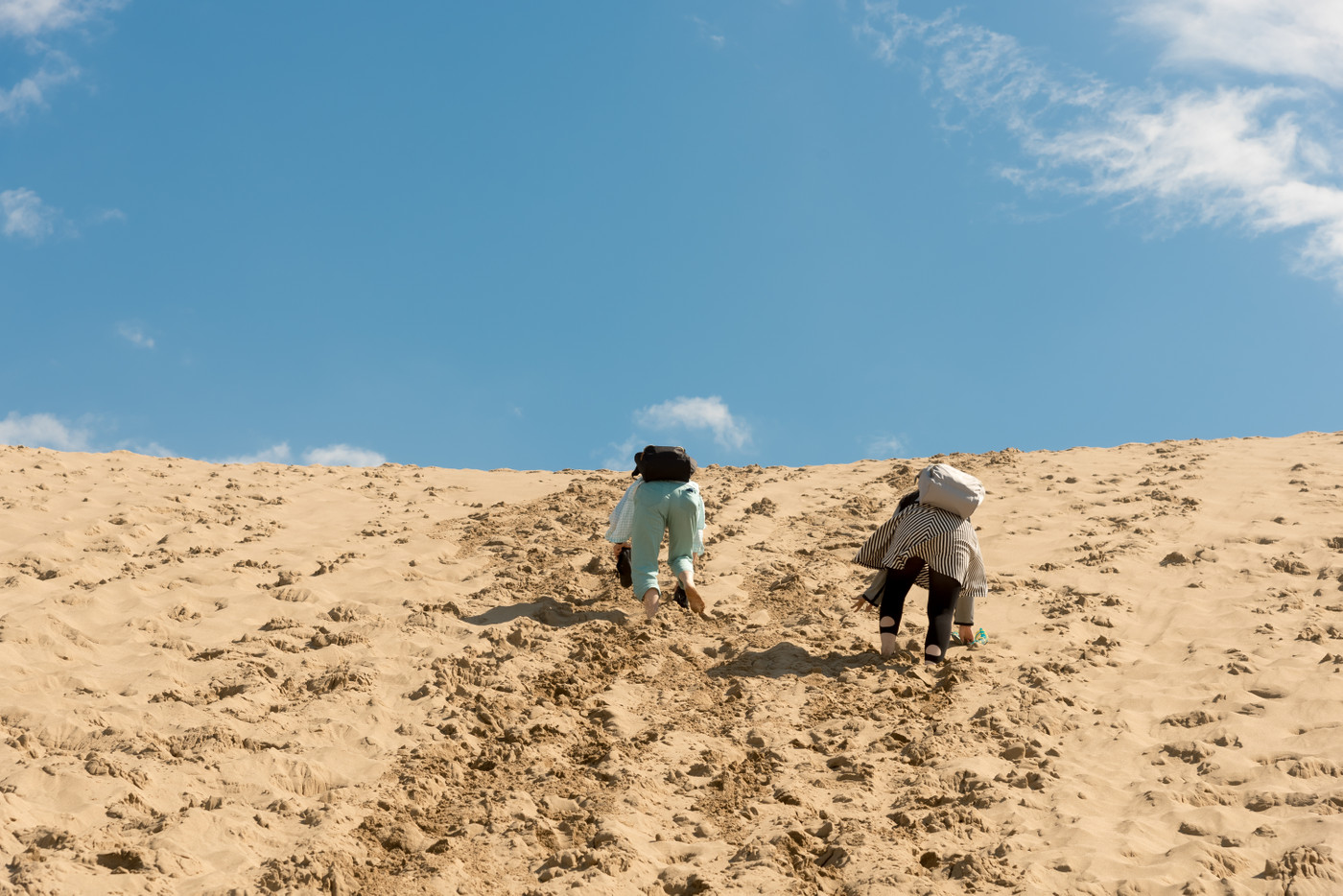
If you do just one thing at Great Sand Dunes National Park, it is this. High Dune is the most accessible dune, and while it is only a 3-mile trek to the summit, climbing up a mountain of sand is much harder than it looks. If that’s not punishing enough, you can keep walking towards the Star Dune, the highest dune in North America.
Gaze Up at the Stars From Star Dune
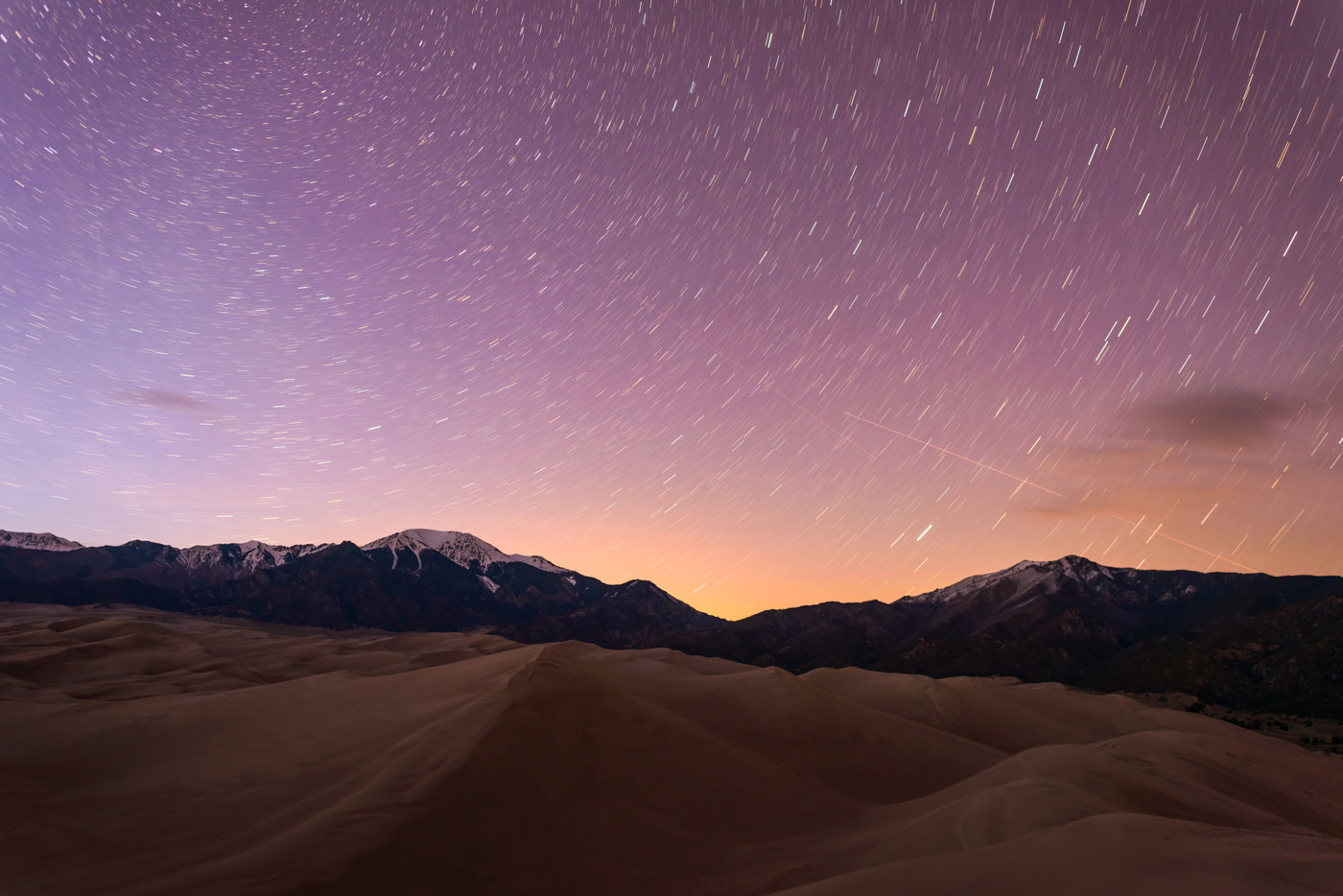
Great Sand Dunes is recognized as an International Dark Sky Park thanks to its high elevation, dry air, and low light pollution. What better place to explore the dunes under a star-filled sky than the appropriately named Star Dune?
Sandboard Down High Dune
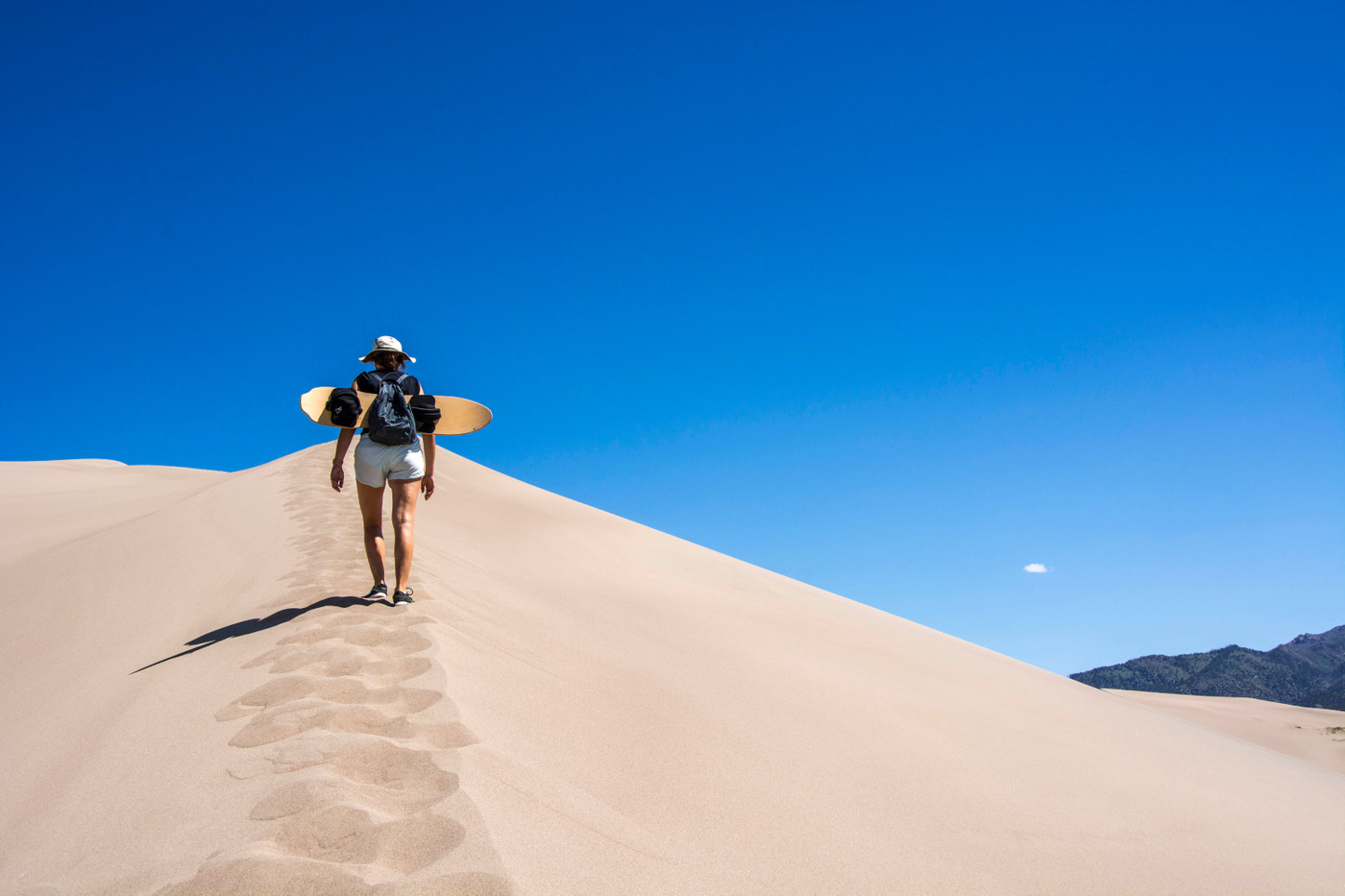
Sandboarding is another one of those activities that everybody who comes to Great Sand Dunes absolutely has to do. Zipping down the High Dune after a punishing climb up is absolutely thrilling. Be sure to rent your sandboard before you arrive since they aren’t available within the park.
Zip Along Medano Pass on a Fat Bike
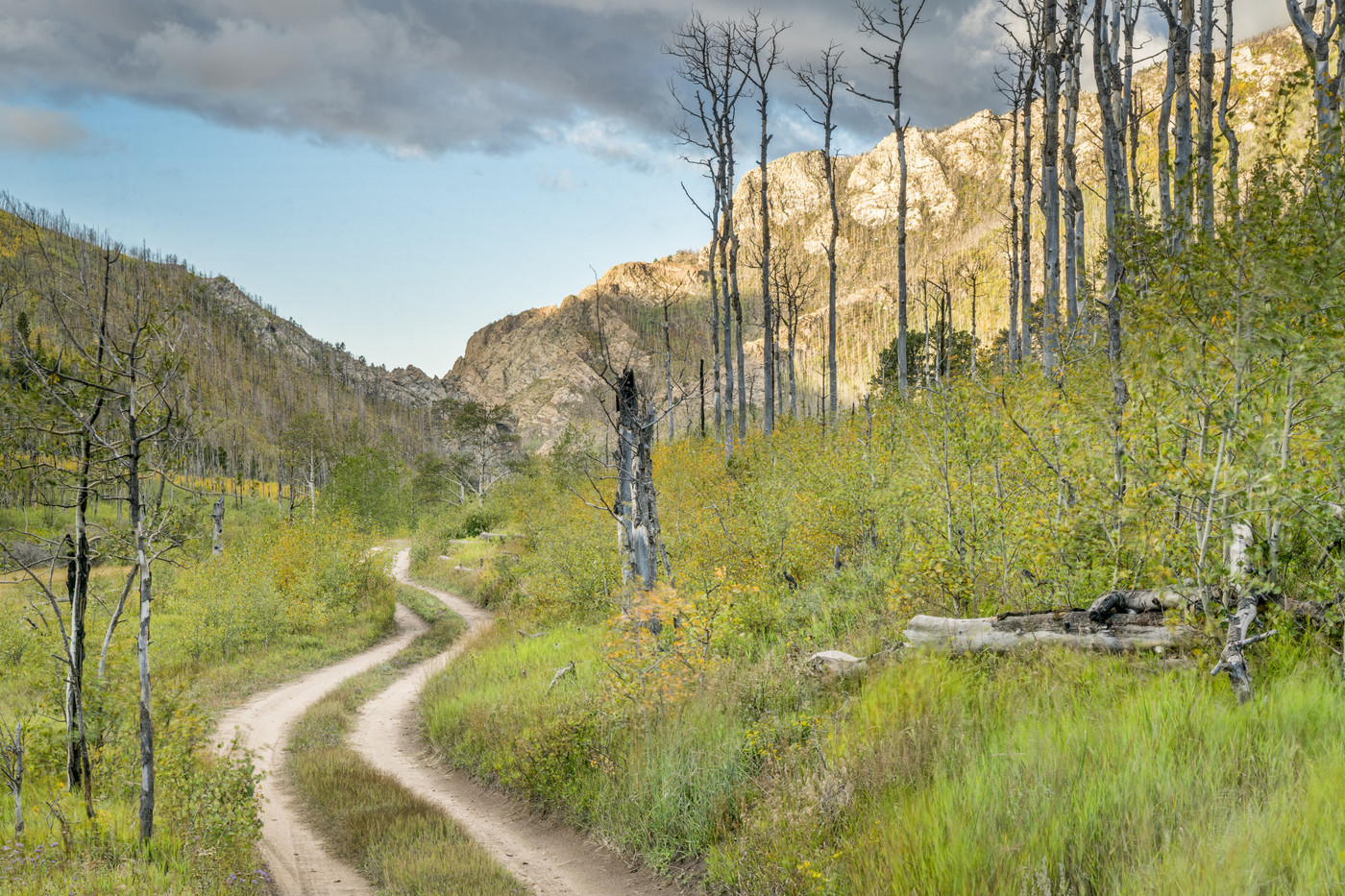
Regular mountain bikes are no match for the sandy trails of Great Sand Dunes National Park, which is why a fat bike (a mountain bike with wide tires) is a necessity. The Medano Pass Primitive Road, which passes by dunes, creeks, and alpine settings, is the best area of the park to try your extra-wide wheels out.
Check out Zapata Falls
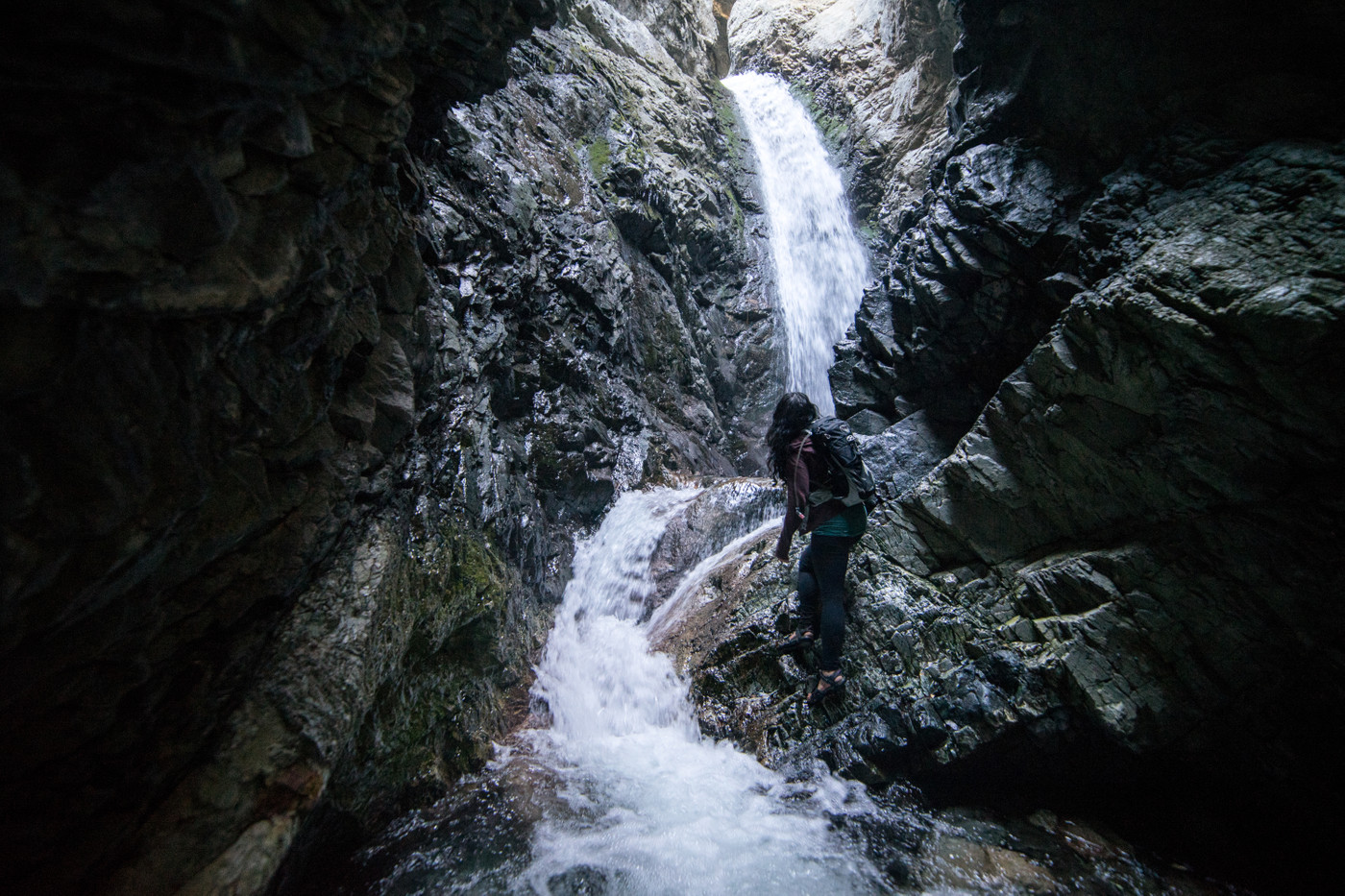
Located just south of the park off of Highway 150, Zapata Falls is a short 0.5 mile hike from the road. These 30-ft falls cascade into a narrow crevasse, making for an excellent photo opportunity.
See Elk and Pronghorns in the San Luis Valley
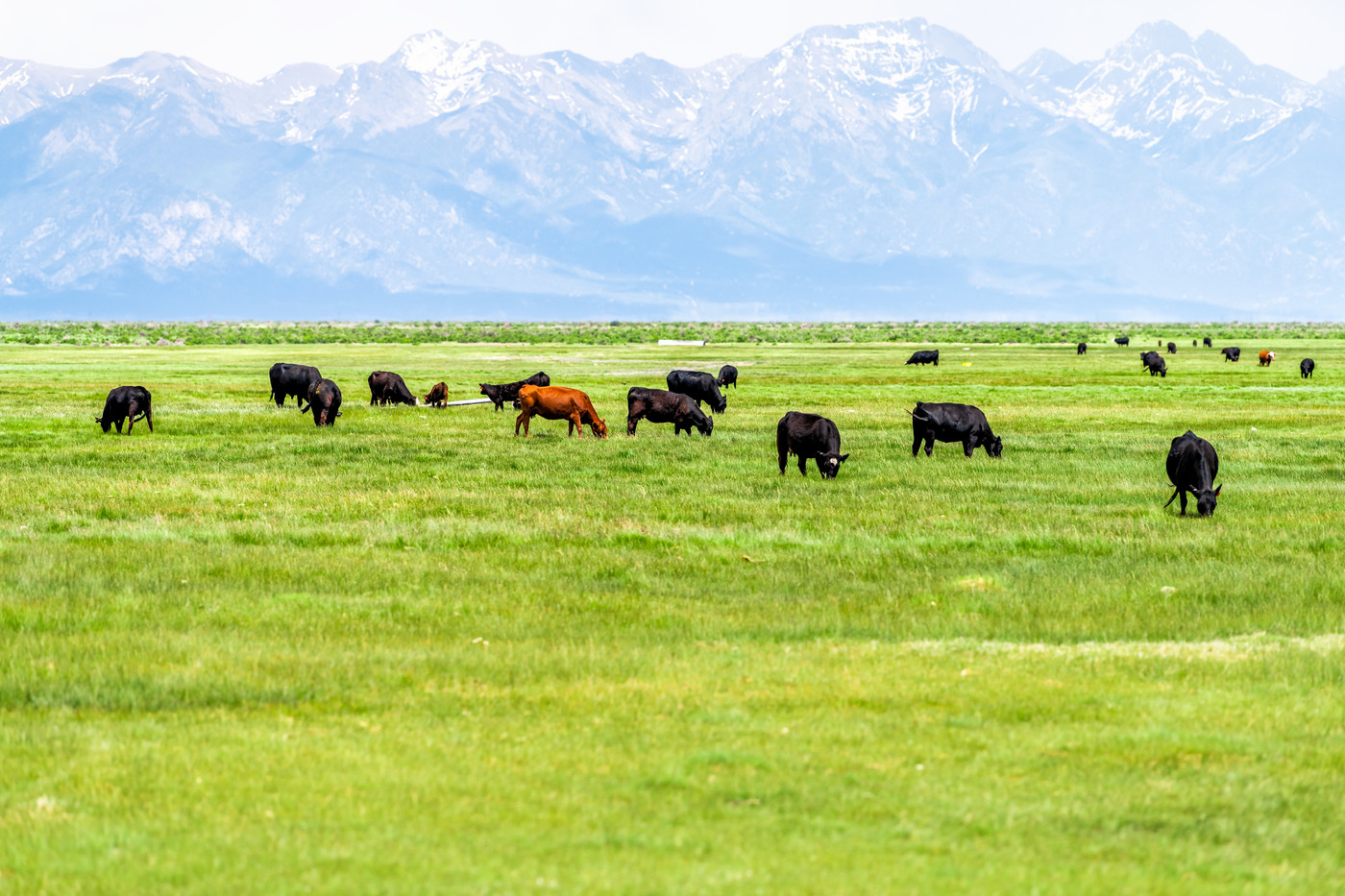
The grasslands to the west and south of the park cover much of the San Luis Valley and are a prime environment for elk and pronghorns. To catch a glimpse of these majestic animals, wake up early and try to visit on days when crowds are smaller.
Make Friends with Some Night Critters at Medano Creek

Much of the park only really comes to life at night. A number of nocturnal animals call the dunes home, including kangaroo rats, coyotes, salamanders, owls, and bobcats. The area around Medano Creek offers especially good opportunities for night wildlife viewing, as does the dunefield itself.
Experience History Along the Los Caminos Antiguos
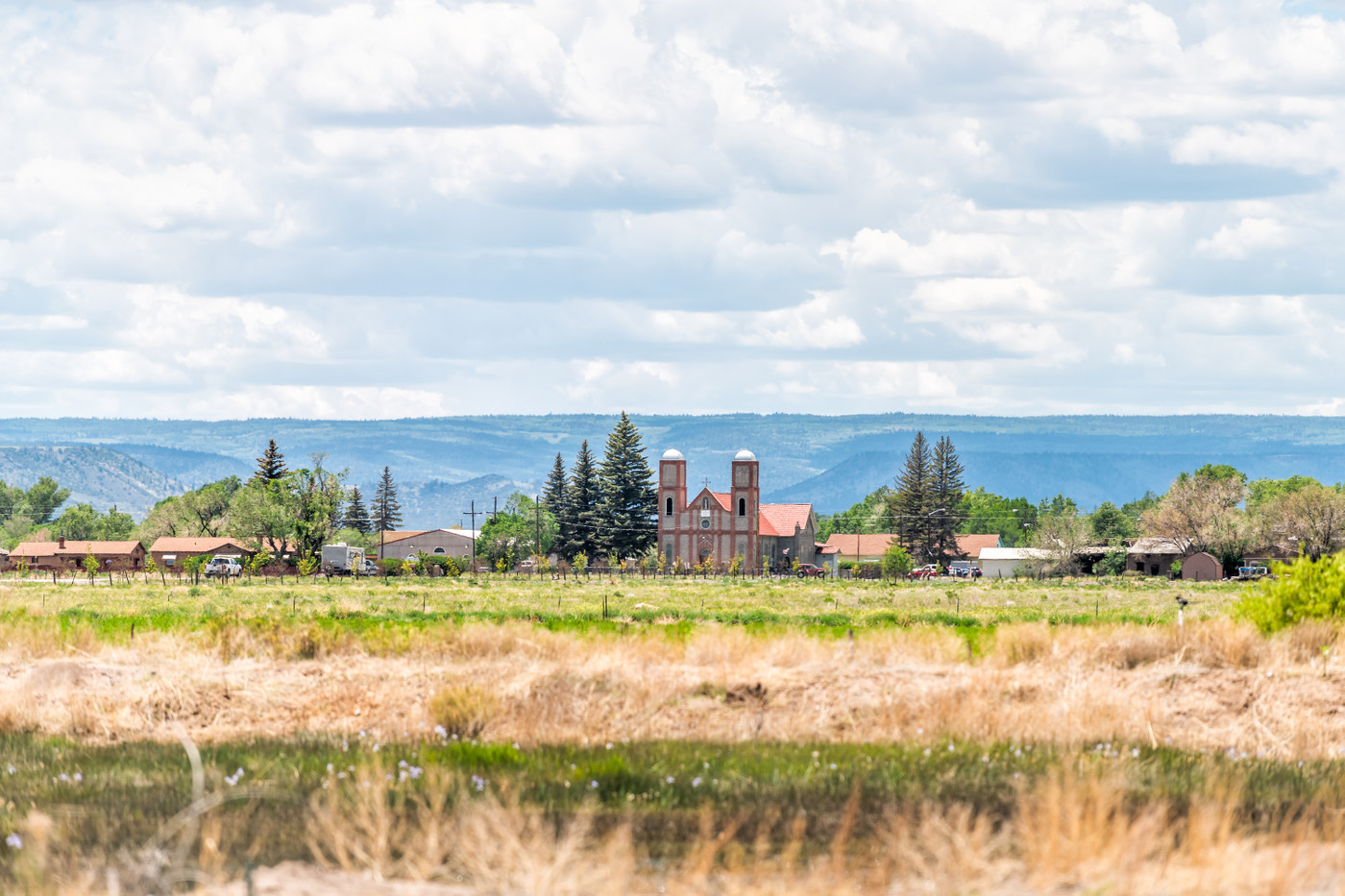
Not only is the San Luis Valley an area of stunning natural beauty, it also has a lot of fascinating history. A series of scenic byways called the Los Caminos Antiguos winds through the area south of Great Sand Dunes, giving you an opportunity to explore sites like Colorado’s oldest surviving town and the valley’s oldest church.
Discover the Wild West at Fort Garland
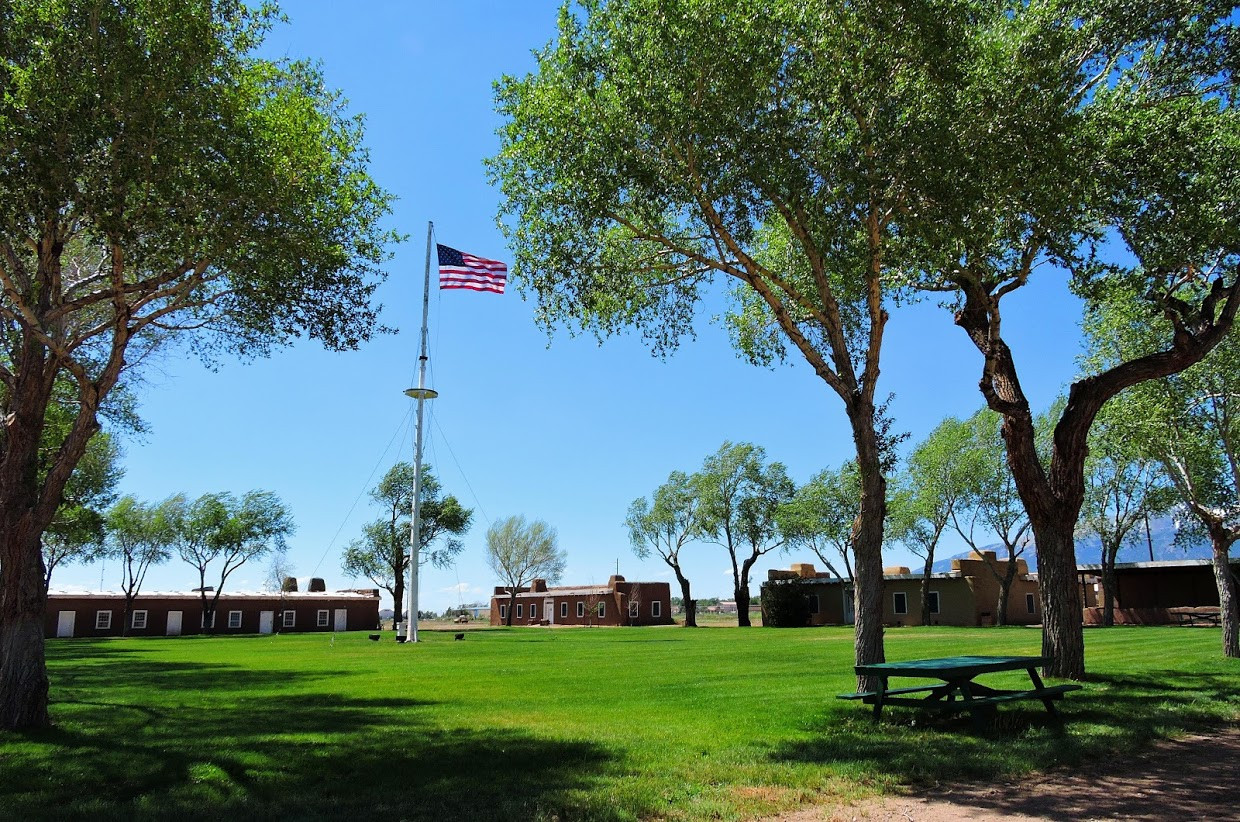
The Fort Garland Museum preserves one of the oldest and most important 19th-century forts in Colorado. Reconstructed adobe shelters give a sense of what life was like at this frontier outpost in the 1860s, which was home to legendary figures like the Buffalo Soldiers and Kit Carson.
Snap a Photo at the Dunes Overlook Trail

Great Sand Dunes National Park is a photographer’s dream anytime of the year and a great place to try out your camera skills. To capture a photo that best conveys the sheer size of the dunefield, head up the Dunes Overlook Trail.
Go Birdwatching at the Alamosa National Wildlife Refuge

Located a short drive away from the park is the Alamosa National Wildlife Refuge. This is an amazing area to see migratory birds, including herons, ducks, geese, and cranes, especially from April to September when the wetlands are flooded.
Take in the Alpine Scenery at Medano Lake
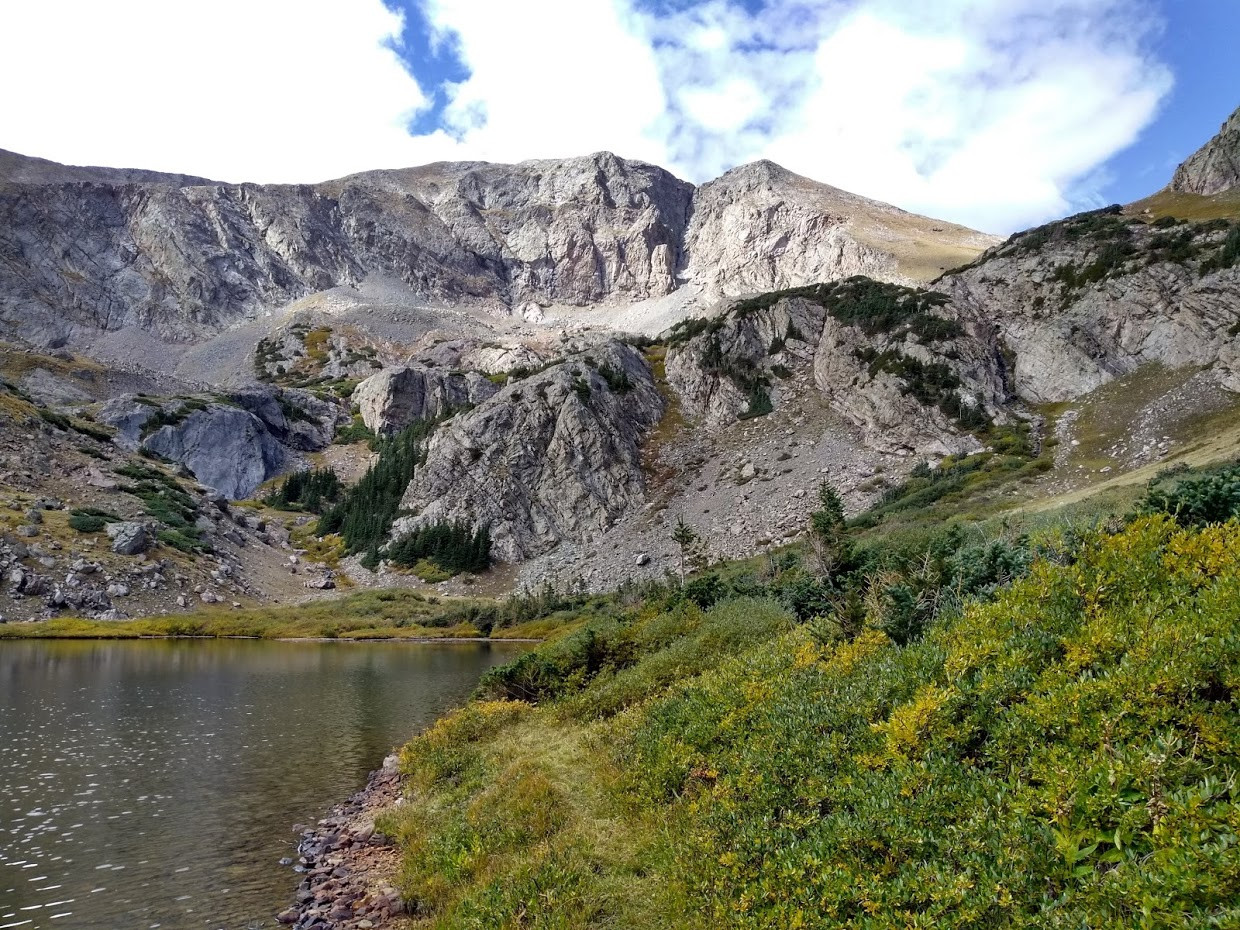
While the dunes may be the main event, this park also covers a large section of the beautiful Sangre de Cristo Mountains. The Medano Pass Primitive Road is the main access point to some stunning alpine scenery and several challenging trails, including one to the beautiful Medano Lake.
Smell the Flowers on the Mosca Pass Trail
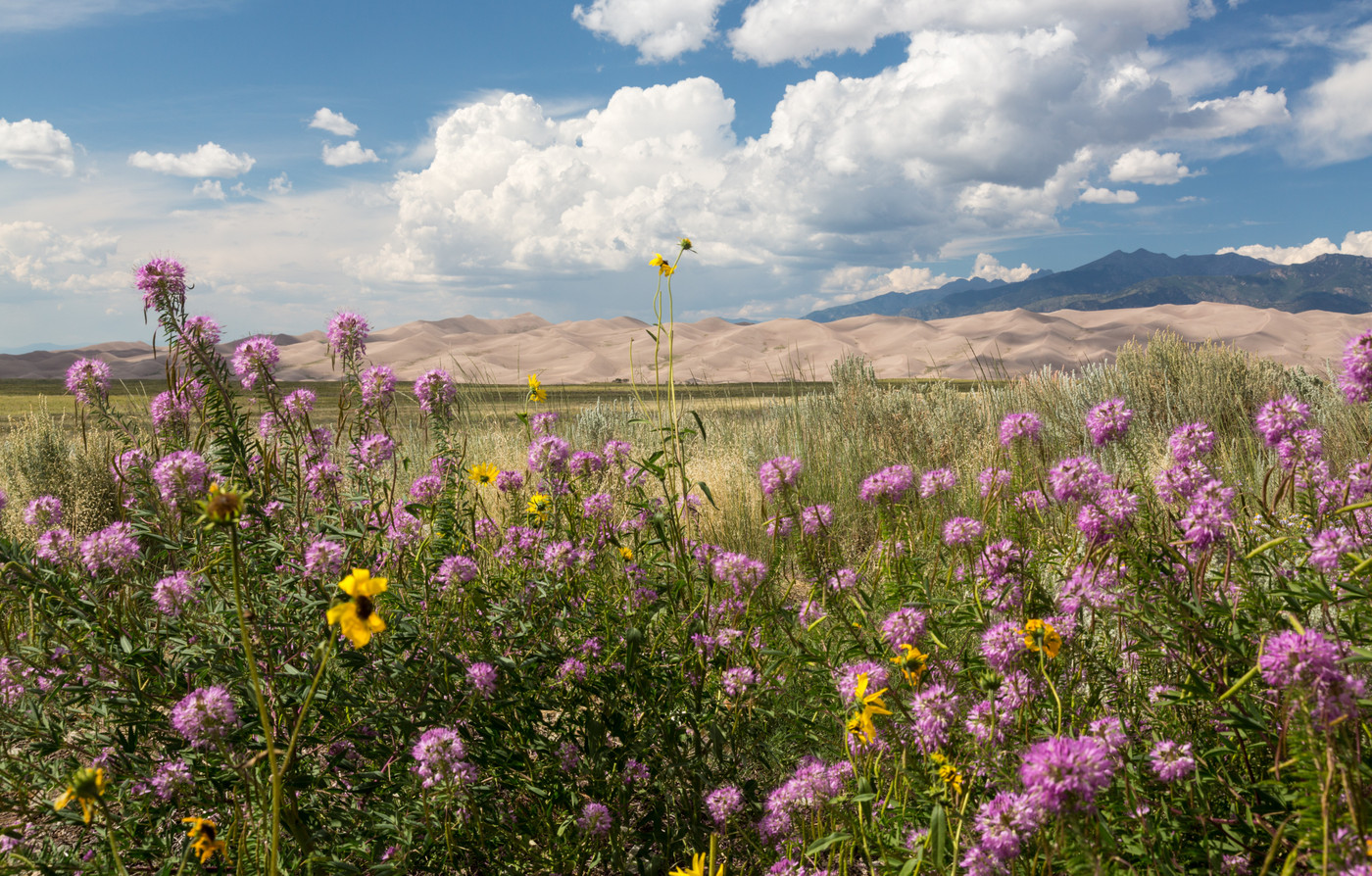
July and August bring rain and thunderstorms, which in turn lead to a magnificent display of flowers in almost every corner of the park. Take a hike along the Mosca Pass to see wildflowers at this time or, if you’re visiting during the end of August, check out the dunes and grasslands to catch a glimpse of some sunflowers.
Keep Watch for “Visitors” at the UFO Watchtower
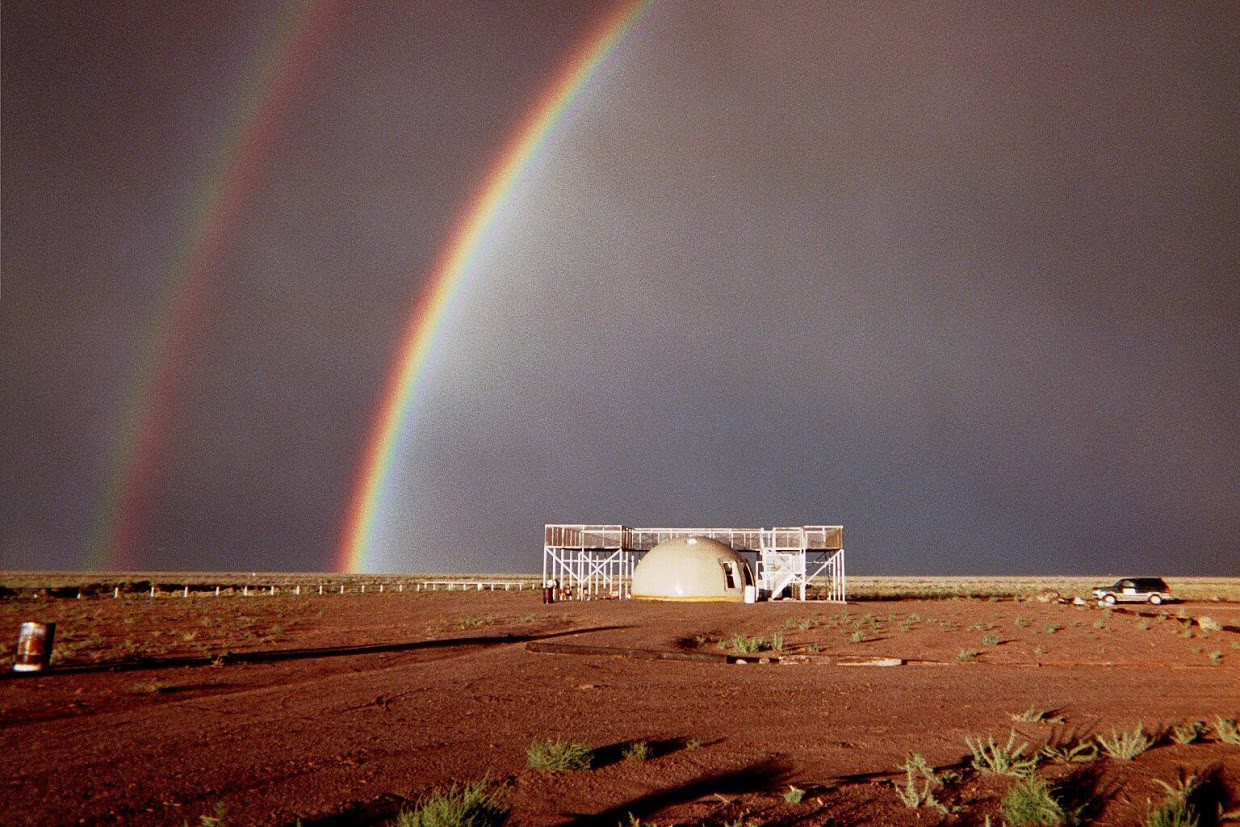
The San Luis Valley is purported to be a hotspot for UFO activity and there’s no better place to try to greet some out-of-this-world visitors than at the UFO Watchtower. This privately-run facility includes a viewing platform and sci-fi displays, but the main attraction is the owner, Judy, who is happy to regale visitors with tales of the area’s many UFO sightings.
